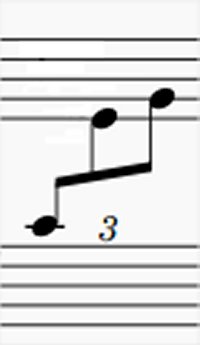Depending on what's happening in the first three beats of the bar, that notation could be perfectly acceptable as-is, with no rests.
A single voice may be split across the staves like that to indicate which hand takes which notes; as a logical "single voice", it only needs rests marked if that single voice is silent for some duration.
From Gould's Behind Bars (page numbers as in my edition):
page 315, "Common beam for both hands":
Where material may be considered as a single part, any group of beamed notes that is divided between the staves may be amalgamated in this way. [...] A major advantage of a common beam is that a rest is needed only as part of the beamed group.
page 317-8, "Single-line passage-work":
As long as it is clear where the beats fall, it is acceptable to use rests only as part of the single line.
There are several examples in the book but I'm not sure of the best way to enter them, so here's an example from IMSLP, of Debussy's first Arabesque:

There are no rests for the upper stave on beats 1 and 4, and no rests for the lower stave on beats 2 and 3.
However, in your case, if the opening three beats of the bar contain multiple voices, then there might be an alternative notation that would be better - but I suspect the way it's notated already is likely to be "fine" even so.
Music notation always involves tradeoffs; the "right" way to notate a beat could be a bad choice in the wider context of voice movement within the bar; the "right" way to notate a stave could be a bad choice in the wider context of hand movement; and so on.


